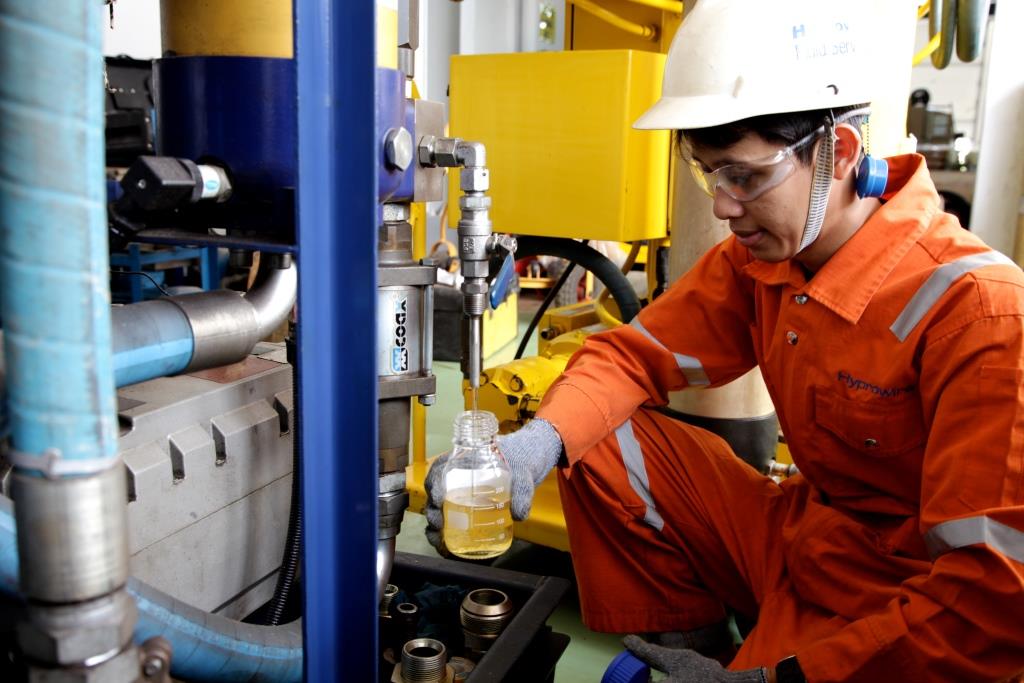
What is API Gravity? How it is used to assess the worth and quality of crude oil and its various densities
The API gravity, or American Petroleum Institute gravity, is a measurement of how heavy or light a petroleum liquid is in relation to water: if the API gravity is greater than 10, the petroleum liquid is lighter and floats; if the API gravity is lower than 10, the petroleum liquid is heavier and sinks. It is a crucial physical characteristic that the petroleum industry uses to assess the worth and quality of crude oil and is an important measure to compare the densities between heavy crude oil, medium crude oil and light crude oil.
API gravity is calculated using the following formula and is represented in degrees:
API gravity = (141.5 / Specific gravity at 60°F) – 131.5
Classification and various grades of crude oil based on API Gravity
According to its measured API gravity, crude oil is categorised as light, medium, or heavy.
The API gravity of light crude oil is greater than 31.1° (less than 870 kg/m3). The API gravity of medium oil ranges from 22.3 to 31.1° (870 to 920 kg/m3). API gravity for heavy crude oil is below 22.3° (920–1000 kg/m3).
More than 1000 kg/m3 of very heavy oil has an API gravity below 10.0°.
The various crude oils can be cheaper or more expensive based on their API Gravity. Oil with API gravity between 40 and 45 degrees typically commands the highest prices as it has the least residual byproducts. The molecular chains get shorter and less beneficial to refineries above 45 degrees.
Examples of how API Gravity is used in the Oil and Gas industries
The use of API gravity in the oil and gas exploration sector is another illustration. Geologists can determine the source of the oil and calculate the potential yield of a reservoir by calculating the API gravity of crude oil samples collected from various locations.
Additionally, crude oil is transported using API gravity. The energy needed to transport crude oil through pipelines or tankers depends on the density of the fuel. It is more economical to transport light crude oil than heavy crude oil since it uses less energy.
Atlas Lab uses many different ways to determine the API Gravity of a crude oil as per the specification or as per the needs of the customer namely :
METHOD | DESCRIPTION |
ASTM D4052 | Standard Test Method for Density and Relative Density of Liquids by Digital Density Meter |
ASTM D287 | Test Method for API Gravity of Crude Petroleum and Petroleum Products (Hydrometer Method) |
ASTM D1298 | Test Method for Density, Relative Density, or API Gravity of Crude Petroleum and Liquid Petroleum Products by Hydrometer Method |
ASTM D5002 | Test Method for Density, Relative Density, and API Gravity of Crude Oils by Digital Density Analyzer |
ASTM D7042 | Test Method for Dynamic Viscosity and Density of Liquids by Stabinger Viscometer (and the Calculation of Kinematic Viscosity) |
ASTM D891 | Standard Test Methods for Specific Gravity, Apparent, of Liquid Industrial Chemicals |
ASTM D1217 | Standard Test Method for Density and Relative Density (Specific Gravity) of Liquids by Bingham Pycnometer |
IP 160 | Crude petroleum and liquid petroleum products – Laboratory determination of density – Hydrometer method |
IP 200 | API Manual of Petroleum Measurement |
ISO 3675 | Crude petroleum and liquid petroleum products — Laboratory determination of density — Hydrometer method |
ISO 3838 | Crude petroleum and liquid or solid petroleum products — Determination of density or relative density — Capillary-stoppered pyknometer and graduated bicapillary pyknometer methods |
BIS 1448 – Part 16 : 1990 | Density, Relative Density or API Gravity of Crude Petroleum and Liquid Petroleum Products by Hydrometer Method |
BIS 4730 : 1994 | Method for Determination of Density of Liquids |






